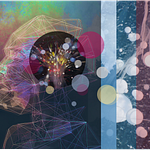Hello Interactors,
My family and I are safely back home in Kirkland, Washington. It feels good to be home and dry and mosquito free. Reflecting on our visit to assorted colleges and the words uttered by students giving campus tours and admission counselor pitches, I imagined my kids embarking on their collegiate journeys. It’s a grand opportunity to pattern-match what you know and what you love with what a school can offer. The trick is finding a pattern that is close and then adapting to the environment or finding an environment that can adapt to your pattern. Is there such a school?
As interactors, you’re special individuals self-selected to be a part of an evolutionary journey. You’re also members of an attentive community so I welcome your participation.
Please leave your comments below or email me directly.
Now let’s go…
RELIGHTING THE ENLIGHTENMENT
We’ve all experienced movies and TV shows where the camera slowly pans across a vast landscape, often with mountains and steep valleys. And then, just as your eye registers wilderness, our visual sense is rewarded by the sound of a screeching, soaring bird echoing through the valley. It’s a Hollywood convention that blends suggestive artistry with the absoluteness of nature. Sometimes the sound of the screech is accompanied by the image of an eagle. That’s when my daughter and I look each other and roll our eyes and think to ourselves, “That’s not an eagle.”
We got to witness the true marrying of the bird with that sound while sitting on the deck at my sister-in-law’s house in Connecticut. And right on cue, my daughter and I looked at each other with jaws agape only to return our squinting gaze back to the sky as a hawk soared above us unleashing that familiar sound. Our senses, primed by the repetitive artificiality of film, were substantiated by the naturally occurring biology of a bird. The blending of art and science.
Arts and humanities have been separated from math and science through decades of academic and societal tribalism. But don’t tell our brains that. It really can’t tell the difference. Our family can’t either. My wife and I found this overlap to be our grounding attraction. Separately growing up finding fascination and success in blending the arts with mathematics; we continue to insist the braiding of these individual strands yields a stronger rope. Nature and nurture has seemingly put our kids on similar paths.
Our daughter is equally adept at communicating with the environment as she is drawing it. She recently went to the Seattle Zoo to draw some animals. When she approached the tiger cage, alone, the tiger rose, stretched, and chuffed – an audible non-threatening breathy snort through the nose typically reserved for another feline friend or zookeeper. The big cat then proceeded to pose for her. She has a way with animals. She also immerses herself in the mystical ancient worlds of Chinese fiction and then exquisitely draws the scenes from memory. As she focuses her college search, she’s attracted to programs that will teach her mind to invent and her hands to make interpretations of both natural and imaginary worlds.
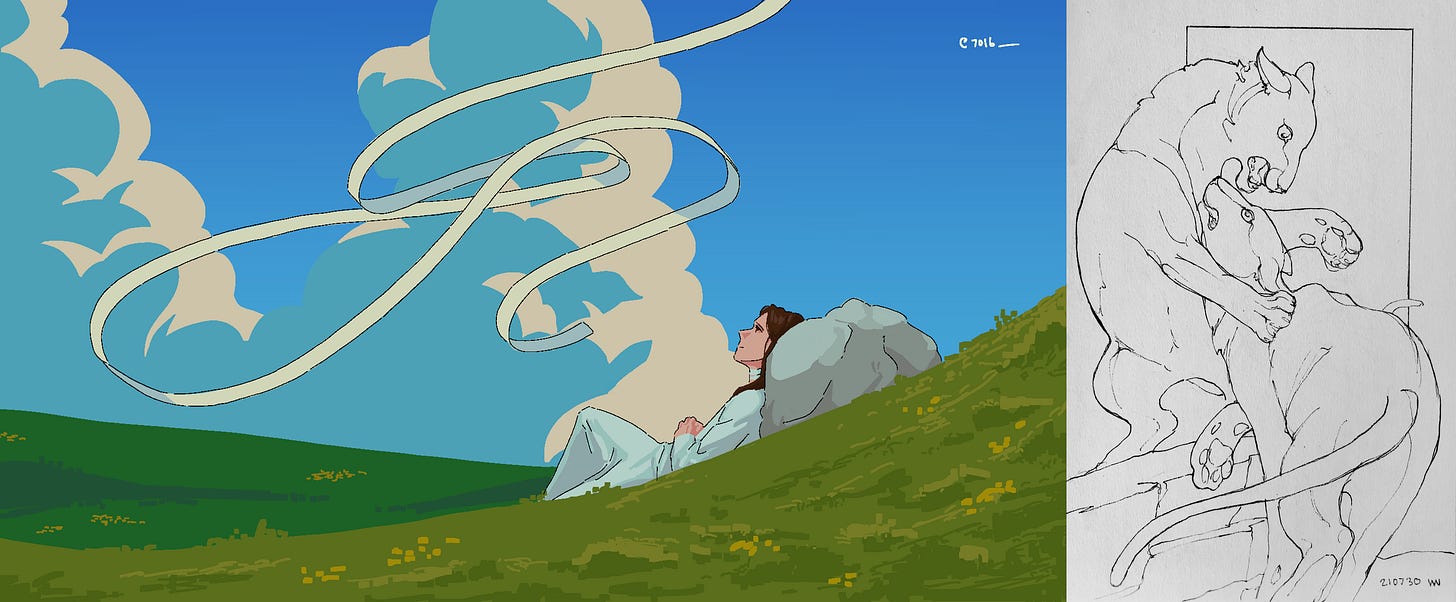
Our son is more interested finance and economics. As a self-proclaimed car nut, perhaps he’s driven by the immediate desire to amass enough money to own his own exotic car collection. Or maybe as a budding car photographer he too is attracted to programs that celebrate the blending of arts and sciences. After all, despite attempts in recent decades to attach economics to rational mathematical certainty, it is still a branch of the social sciences. And it’s confounded by the interwoven and interdependent uncertainties of human behavior who’s desire to attain worldly possessions is bounded by the limits of our natural resources.

In the words of esteemed biologist, E. O. Wilson, from his book Consilience – The Unity of Knowledge:
“But the theorists cannot answer definitively most of the key macroeconomic questions that concern society, including the … strength of ”externalities” such as the deteriorating global environment. The world economy is a ship speeding through uncharted waters strewn with dangerous shoals. There is no general agreement on how it works. The esteem that economists enjoy arises not so much from their record of successes as from the fact that business and government have no where else to turn.” 1
Wilson goes on to argue that of all the fields in social science, economics, as it was intended to be studied and practiced, is furthest along the path of integrating the arts and sciences. Economics has embraced the lucidity of calculus and analytical geometry that advanced fields like physics, chemistry, and biology.
But it was the behavior of the physical environment that inspired Newton to invent the language of calculus to describe it. It was through the manipulation of environmental conditions that he arrived at the mass and distance laws of gravity and three laws of motion – all in the span of just three years. For the first time the world had a way of consistently and empirically describing and understanding astronomical orbs in motion and earthly sand in the ocean. Poet Alexander Pope summed up Newton’s nudging of the world from darkness in two lines:
"Nature and Nature’s laws lay hid in night:
God said, “Let Newton be!” and all was light.
FROM NEWTON TO NEEDHAM
Newton’s influence on the age of Enlightenment cannot be understated. Once great thinkers of the time realized the power of analyzing and describing complex phenomena in repeatable, fundamental terms, they sought ways to apply it. In 1835 Belgian astronomer and mathematician, Adolphe Quetelet, asked why not apply these methods to social phenomena? Soon the field of “social physics” was born; what we now call sociology. Quetelet was interested in applying statistical methods to the social sciences believing they could help explain phenomena like crime rates, marriage rates, and suicide rates.
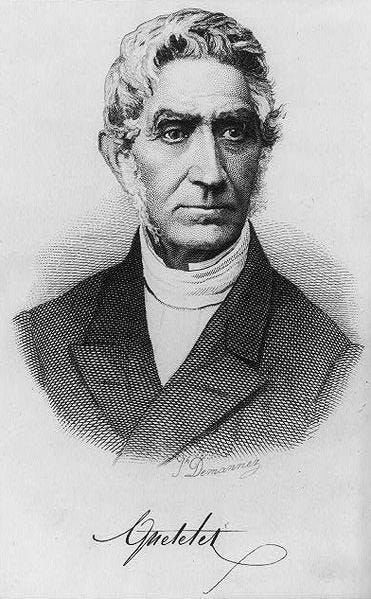
He was criticized by other scientists for assuming such events had an explanation other than freedom of rational choice. Here we are 186 years later and many in the social science of economics still believe humans are rational actors and insist personal choice will ultimately lead to our collective good; despite a world economy with historic income inequality, exploitive labor practices, fragile global supply chains, extractive capitalistic markets, and dwindling natural resources. Their math does not compute.

The enlightenment’s insistence on precise reduction of the natural world into mathematical minutia was the work of Newton’s predecessor, the inventor of algebraic geometry and modern philosophy, and France’s preeminent scientist, René Descartes. He believed that because the world exists in three dimensions, it should be described in three dimensions. I spent last spring focused on the chopping of America into a grid made of dots named after Descartes: the Cartesian coordinate system.
Descartes vision for a unified knowledge grounded in a fundamental reduction of the world into mathematical terms came to him in 1619 in a single night of successive dreams. He recognized everything in the world, from rainfall to reasoning, results from cause and effect. This rational description of naturally occurring phenomena is what led him to marry the idea of physics with medicine to create the field of biology.
But as a devote Catholic and a believer in God as the perfect creator, he had a conflict to resolve. He solved it by creating the separation of mind and body. With one phrase, I think, therefore I am, he was able to justify the idea of God as being all powerful in his head while his body was of this world and thus scientifically testable and mathematically measurable.
Some historians believe is was this logical and rational separation that fueled the explosion of scientific discovery throughout three centuries of Enlightenment in a Europe dominated by religious belief, power, and control. An era of discovery unique to Europe. British scientist and historian, Joseph Needham, spent most of his career trying to understand and explain why countries like China and India didn’t have their own ‘Enlightenment’ given their advancements in science that predated European discoveries.
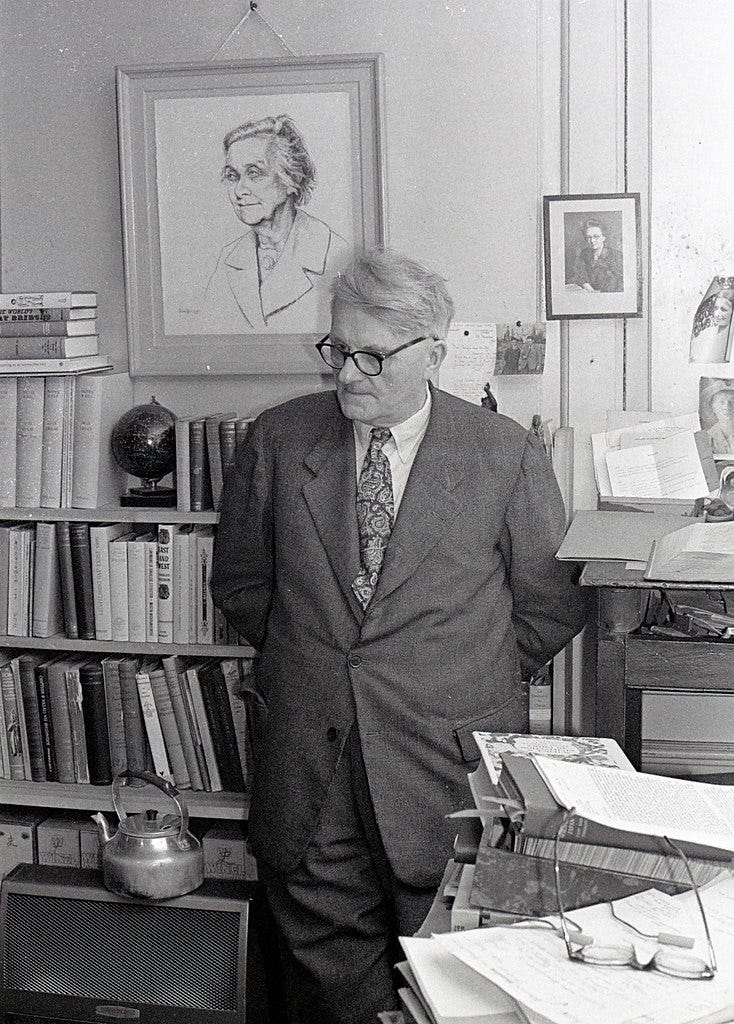
In 1969 he posited what has become known as “The Needham Question.” He asked,
“Why did modern science, the mathematization of hypotheses about Nature, with all its implications for advanced technology, take its meteoric rise only in the West at the time of Galileo.”
He was particularly interested in why the same discoveries “had not developed in Chinese civilization.” After all, Needham pointed out later, in 1985, that even one of the founders of the Enlightenment, Francis Bacon,
“had selected three inventions, paper and printing, gunpowder, and the magnetic compass, which had done more than (anything else), he thought, to transform completely the modern world and mark it off from the antiquity of the Middle Ages. He regarded the origins of these inventions as ‘obscure and inglorious’ and he died without ever knowing that all of them were Chinese.”2
In 1937 three Chinese students came to study at Cambridge where Needham was doing work in biochemistry. One of these students, Shen Shih-Chang, studied under Needham, another, Wang Ying-lai, went on to be the first to create a synthetic insulin, and the third, Lu Gwei-djen, was a biochemist and historian who taught Needham Chinese and went on to co-author the influential book, Science and Civilisation in China with Needham.
Their knowledge of science and history inspired him to take many extended trips to China to meet and consult with an array of Chinese scholars, artists, and scientists. His commitment to this cross-cultural exchange is what led him to co-found the United Nations Educational, Scientific, and Cultural Organization (UNESCO) in 1945.
Needham concluded that China’s
“focus stayed on holistic properties and on the harmonious, hierarchical relationships of entities, from stars down to mountains and flowers and sand. In this world view the entities of Nature are inseparable and perpetually changing, not discrete and constant as perceived by the Enlightenment thinkers. As a result the Chinese never hit upon the entry point of abstraction and break-apart analytic research attained by European science in the seventeenth century.”
[Wilson: Consilience] As Needham’s interpretation of the history of Chinese science unfolded, he became increasingly convinced the ancient spiritual belief of Taoism played a central role in their discoveries and advancements.
THE TAO OF YOU
The word Tao is a Chinese word that can have many meanings depending on tonal variation. According to one Chinese dictionary, said one way it has 39 meanings all related to “way” or “path”, but if said with another variation it has six meanings related to “guide” or “lead.” Etymological scholars seem to agree on the root meaning: “to tend in a certain direction.” The Traditional Chinese characters for Tao pictorially construct such a meaning: 迪. 辶 ti "walk" and , 由 yu "to proceed from”. Taken together they can mean "follow a road," "go along," "lead", "direct", or "pursue the right path." Maybe we could add another popular English word the western world adopted, “enlightened.”

Like Needham, my daughter was also influenced by the presence of Chinese students. What started in middle school as an obsession with K-Pop has morphed into a fascination with a genre of Chinese fantasy novels called 仙侠, Xianxia. The literal translation is 仙 xian “immortal” 侠 xia “hero” and the novels feature mortal protagonists known as ‘cultivators’ who nurture life experiences and resources through struggle and pain to become immortal beings or xian. Like Needham’s interpretation of Chinese science, this genre draws heavily on Taoist beliefs and also Chinese martial arts. Cultivators are often students of Tao philosophy and they’re “following a road” in “pursuit of the right path”.
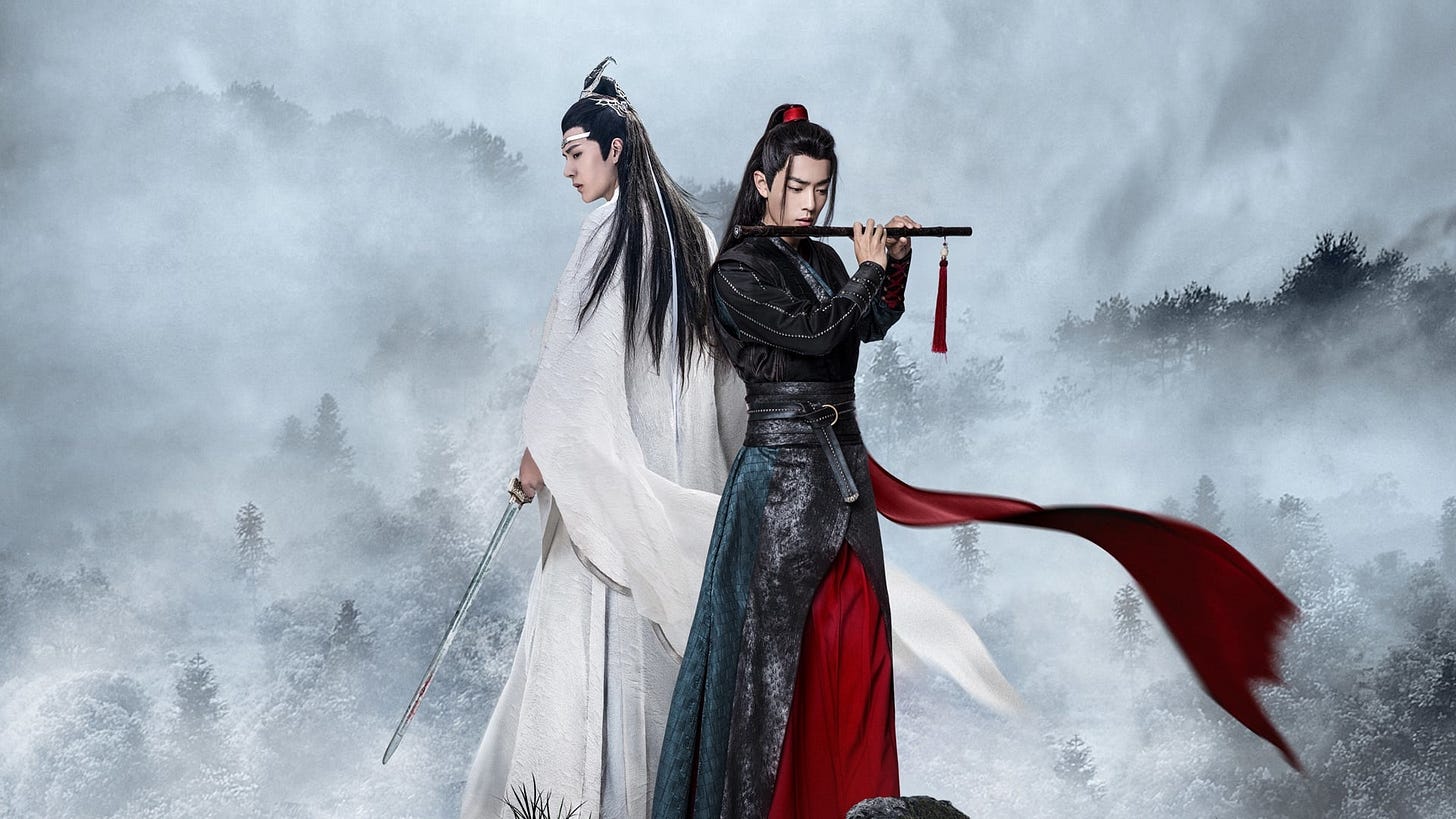
My daughter is enamored with the Taoist doctrine of living simply and honestly and in harmony with nature. It’s what she experiences in her Dr. Doolittle-esque interactions with animals, drawing them in their habitat, or even recreating scenes depicting twisted plots from one of 300 chapters found in her voluminous Chinese novels. The word plot was first meant to mean a building site. Then directors came along to plot areas on a stage for actors to enact a scene — for a story that we now refer to as a plot.
We humans have been plotting through the visual arts, depicting stories of animals and humans interacting with people and place, for at least the last 30,000 years. Caves have allowed these images to remain all this time, but many scholars believe people were drawing on whatever they could find; countless images washed away by weather and time. What my daughter is doing is in her DNA. It’s in yours too.

Drawing is what provided a shortcut through Darwinian evolution. Before our brains were able to draw, pre-human creatures were stuck evolving at the same evolutionary rate as any other species. But once our brains became powerful enough to take what we saw in the world and then draw it, that knowledge could be stored for generations. Over successive iterations, the plot thickened.
By drawing scenes and telling stories humans could communicate between tribes and generations about what worked and what didn’t. The sound of the hawk screeching across the sky. What does it look like? What does it mean? We cheated the system of evolution through maps, drawings, and depictions of life and death; humans in search of advancement, economic utility, with minimal negative externalities. We drew images of struggle on the path of mortality in search of the right path; cultivating a journey to the immortality of our species through artistic genetic shortcuts. Without images our species would have evaporated ages ago. Given the climate crisis, and our economy that fuels it, what stories will the images tell to future generations?
Epigenetics is the study of how our behavior and our environment influence how our genes work. We shape our environment and our environment shapes us. We all inherit a set of DNA from nature, but epigenetic environmental changes alter how a DNA sequence is influenced. Nature and nurture. My wife and I have given our kids the genes they have and we’ve provided the environment for their DNA to be influenced. In another year they’ll be embarking on journeys into environments of their choosing learning new ways to shape their own DNA and the environment around them. Like the bird flying high in the sky, let’s hope they find ways to live simply and honestly and in harmony with nature. Let’s hope we all find the right path.
CONSILIENCE THE UNITY OF KNOWLEDGE. Edward O. Wilson.





